Because the Eaton Hearth unfold on January 7, curators on the Gamble Home—an Arts and Crafts-era residence in Pasadena by the structure agency Greene and Greene, which Again to the Future followers would possibly acknowledge as Doc Brown’s mansion—stored refreshing evacuation maps and checking in with one another on a gaggle textual content: Would the fires attain the home?
They anticipated excessive winds, based mostly on forecasts the night time earlier than, however not the fast-moving wildfires raging in neighboring Altadena. Because the evacuation zone inched nearer and the home entered the warning zone the morning of January 8, Jennifer Trotoux, director of collections and interpretation on the Gamble Home, feared that the construction may be misplaced and marshalled workers who lived close by (and who weren’t vulnerable to being evacuated themselves) to return and take away as many objects as they might.
“We’re at all times nervous,” Trotoux says, noting that the home and the properties within the neighborhood round it are comprised of wooden, plus they’re close to the Arroyo Seco path, a forested space. “The very character of the place makes it inclined to fireside.”
The results of local weather change are damaging or threatening architecturally important websites world wide. Stateside, a few of the high-profile instances have included sea degree rise that’s impacting Colonial-era homes in Newport, Rhode Island, inland flooding that has inundated the Mies van der Rohe–designed Farnsworth House, and fires that destroyed historic Lahaina, Maui. When many of those catastrophes strike, it’s merely not potential to avoid wasting the entire constructing or district, however typically there’s an opportunity that curators and website caretakers are capable of take away objects from them, making real-time selections in regards to the historical past that can stay tangible and what might doubtlessly turn out to be misplaced without end.
Identical to individuals packed go luggage of essential paperwork, remedy, and sentimental items when Los Angeles despatched evacuation orders, curators at historic properties—just like the Gamble House, Eames House, and Burns House—corralled essential artifacts to carry to safer floor.
Trotoux and her colleagues arrived with two minivans and a hatchback, which they rapidly full of furnishings and objects from the home: artwork glass lanterns; steel andirons and instruments for the fireside; rugs; writing desks; chairs from the first bed room, front room, and eating room; Rookwood pottery; and Tiffany lamps. They wrapped them in shifting blankets and tablecloths they’ve for particular occasions, and tucked pillows round them to stop harm. “I used to be simply in a daze,” Trotoux says of the operation. “We simply stored placing one foot in entrance of the opposite.”
Preserving Design Historical past within the Local weather Period
Eradicating fragments or furnishings from buildings is a standard (and sometimes unethical) follow. Whereas particular person parts can by no means totally convey the total spirit of a spot, these artifacts are helpful proxies for the entire. For instance, Frank Lloyd Wright’s Imperial Lodge in Tokyo was demolished in 1968, however the eating chairs and foyer have been salvaged, providing a window into the world he created. Within the occasion of deliberate demolitions or closures, there’s normally ample time to take away what’s most notable; nonetheless, in an emergency like a fireplace it’s a race towards the clock.
Due to the worsening fires in Los Angeles, museums have built-in object-rescue operations into their collections administration plans. The curators of the Eames Home, which is positioned within the Pacific Palisades and was at extreme threat of burning down on this yr’s fireplace, built-in this pondering into their conservation administration plan, which was completed in 2018. It encompasses methods for website preservation (like clearing brush and changing extremely flammable Eucalyptus bushes with drought-tolerant native Dwell Oaks) in addition to emergency measures like making use of fireplace retardant and eradicating choose objects, that are traditionally important parts of the home and its historical past.
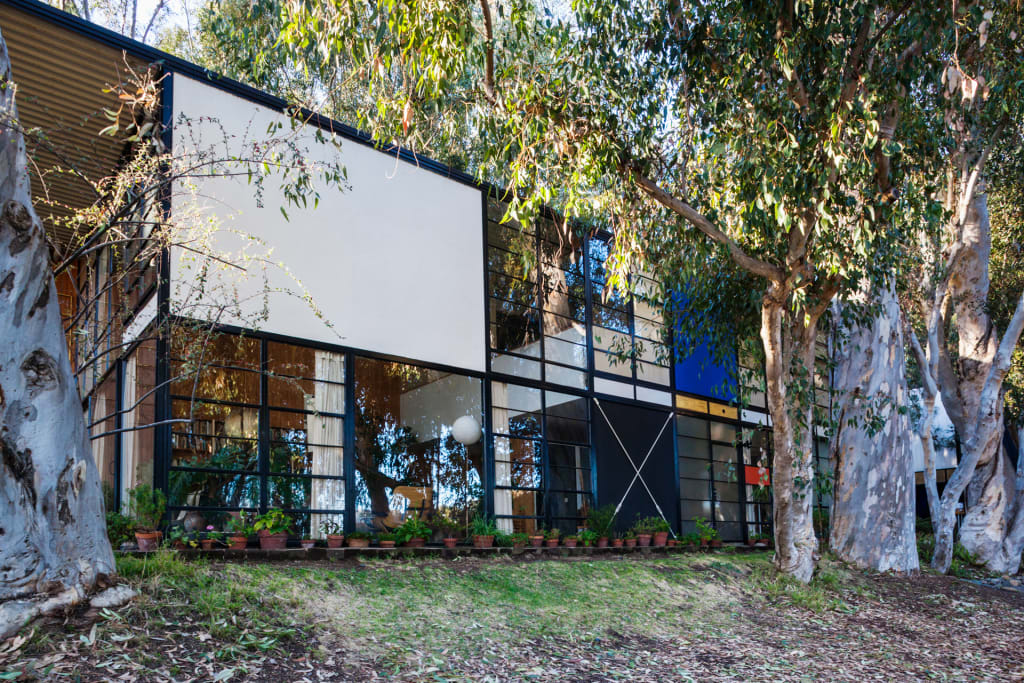
Often known as Case Research No. 8, the 1949 home by designers Charles and Ray Eames started as an experiment in prefabrication however rapidly grew to become a laboratory the place they examined prototypes and surrounded themselves with examples of fine design that they collected on journeys world wide, which they organized in particular juxtapositions. Preserving the best way that they lived is essential to the curators, in order that they prioritized eradicating full tableaux of objects.
The 2019 Getty Fire examined the Eames Basis’s planning. They eliminated objects again then, which grew to become like a take a look at run for the Palisades Hearth. “It’s important to have completely different lists—you could have quarter-hour, you could have half an hour, you could have no matter,” says Lucia Dewey Atwood, the director of the Eames Basis, the nonprofit that oversees the home (and one in all Charles and Ray’s grandchildren). Nevertheless, as a result of the precise scenario is unpredictable, the curatorial workforce makes selections on the fly based mostly on how a lot time and shifting capability they’ve.
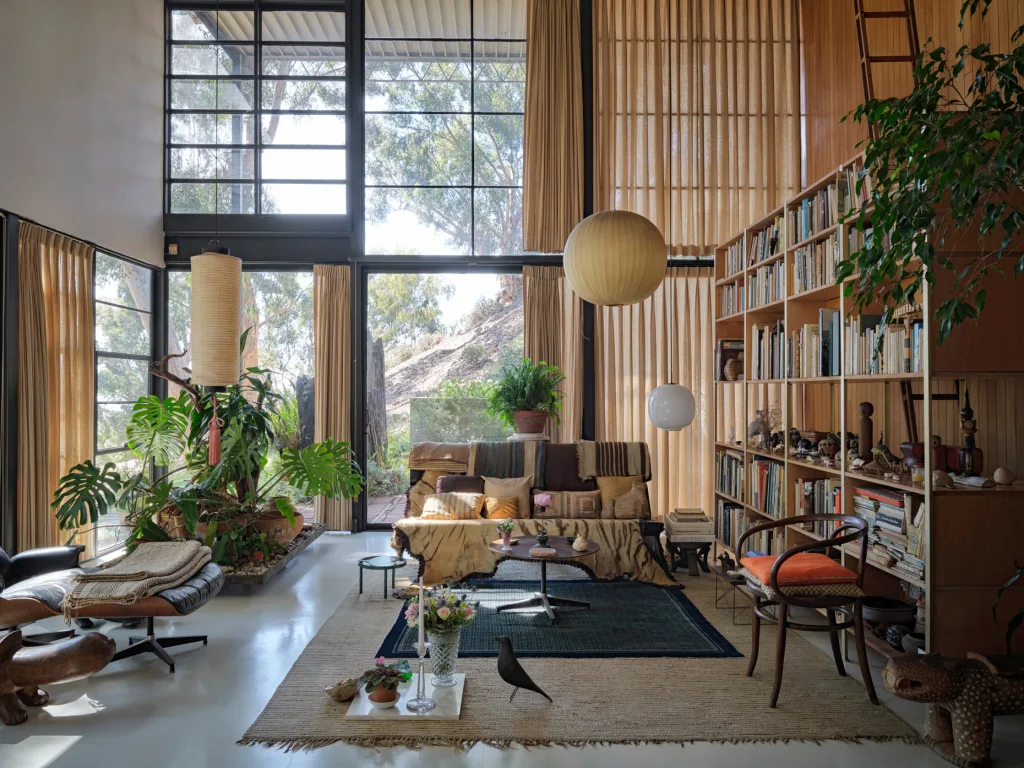
This time, “I had a window of about three hours between the time that I noticed, Oh my God I bought to recover from there, talked my well past the firemen and police, bought to the home, secured the objects, after which took them off-site,” Atwood recollects. “It was such a rush. It was overwhelming.”
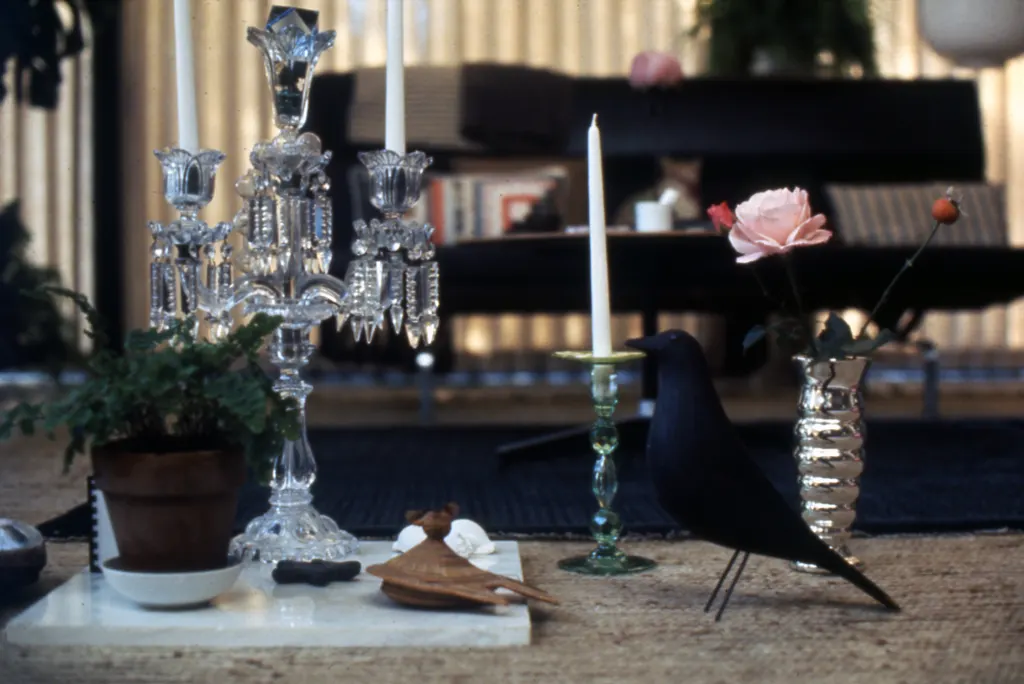
Due to time and transportation constraints, Atwood may take solely two tableaux. The primary was in the lounge, a composition of a low desk the couple designed; a blue field from Austria with brass bells from India within it; a figurine of a monkey using a deer and a steel shell from India; a trio of sea creatures made by the Inuit; and a stone flint. The second was a set of serving spoons stored close to the kitchen sink and a bread knife with a ribbon tied round it that was a present to Ray from Charles.
Along with the tableaux, Atwood additionally took an African stool, a portray by Ray, and the well-known home chook (which impressed a replica sold by Vitra). A couple of books from the library—together with titles on Jap philosophy, 9 Chains to the Moon by Buckminster Fuller, and a Russian grammar ebook—rounded out the combo.
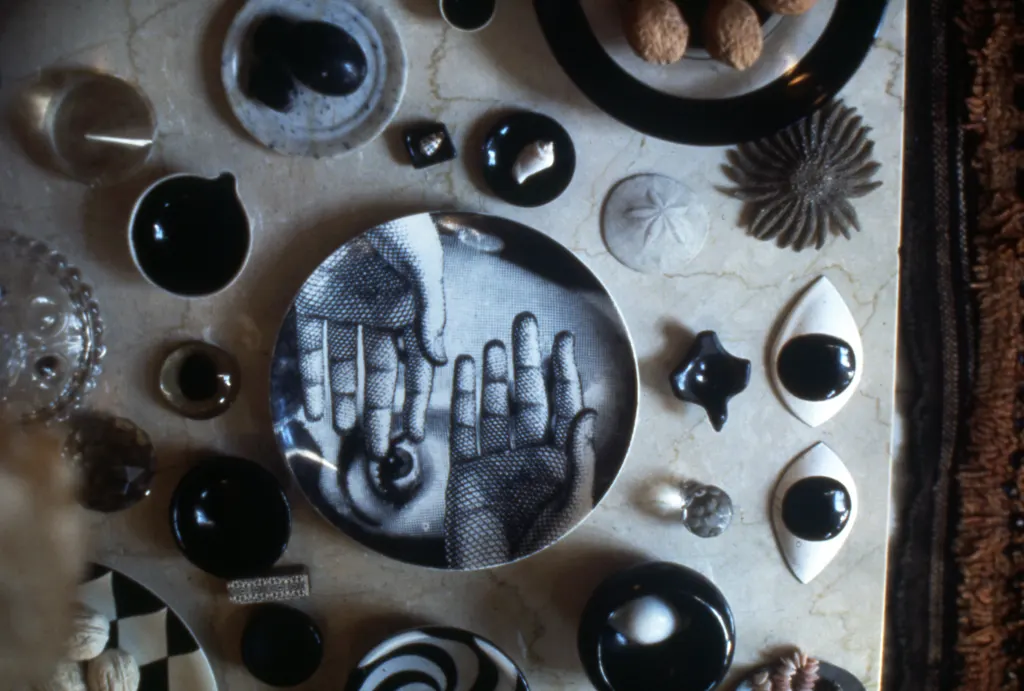
“These objects inform the story of their dwelling and their working,” Atwood says. “They’re essential as a result of this isn’t only a construction; that is additionally displaying how they honestly lived in a really visceral manner.”
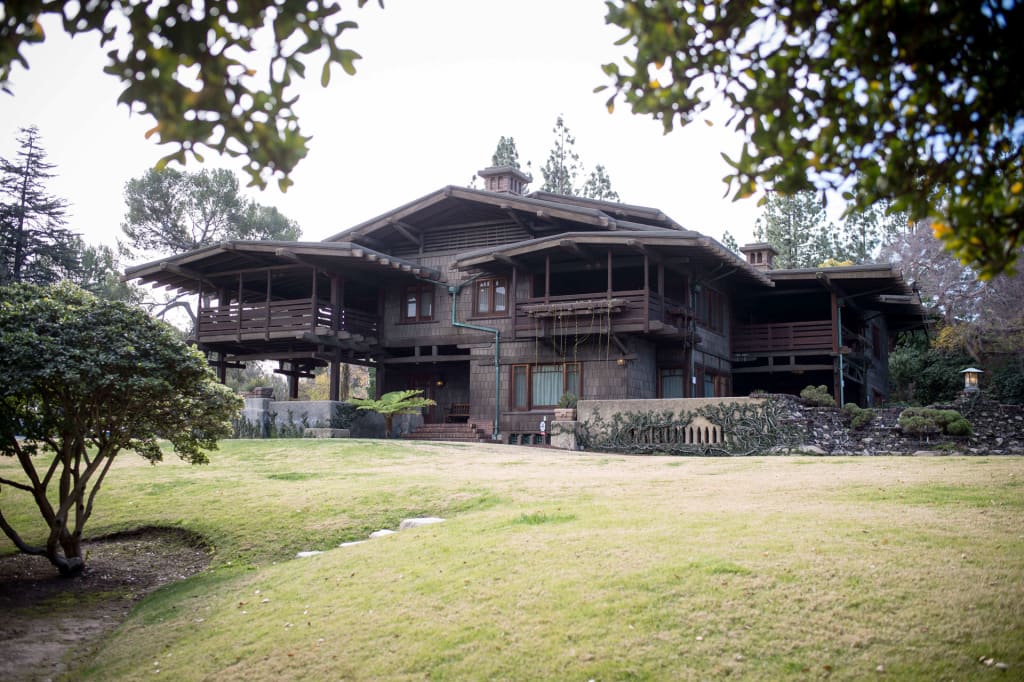
Selecting Particular person Objects when the Complete Concept Is Vital
In 2022, the Gamble Home up to date its collections administration coverage to incorporate directions for eradicating objects in case of fireside. They envisioned a state of affairs when first responders may be the one individuals who would possibly be capable to enter the home, in order that they drafted detailed ground plans with arrows and pictures of the objects—which might all be small-scale and never embrace any furnishings—that they might hand over.
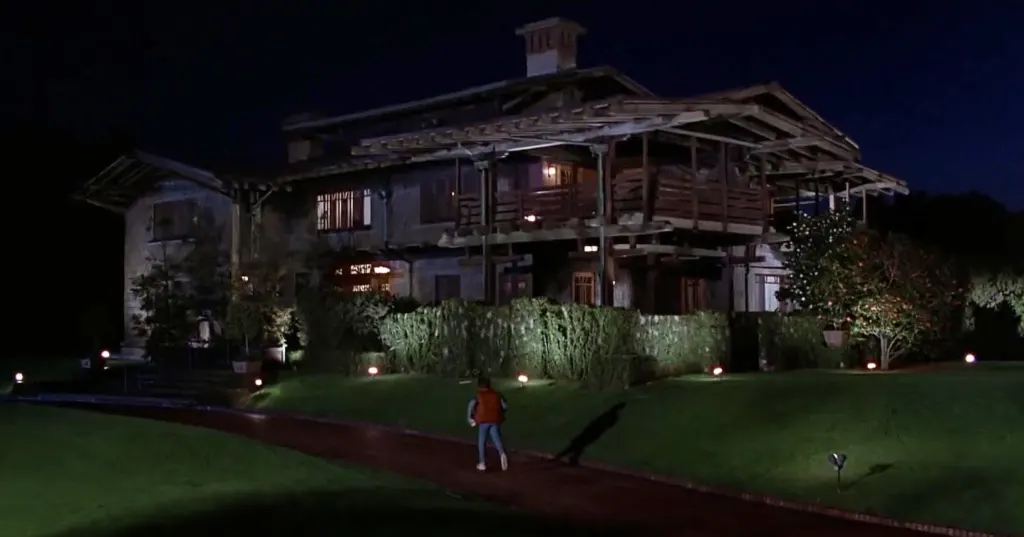
Nevertheless, determining what could be most consultant of the entire was a troublesome task. The Gamble Home is the one Greene and Greene challenge with all of its furnishings intact. “It’s that totality that makes it so treasured,” Trotoux says. “And that’s what made it so exhausting after we went round and seemed on the objects and the furnishings to determine what to take.”
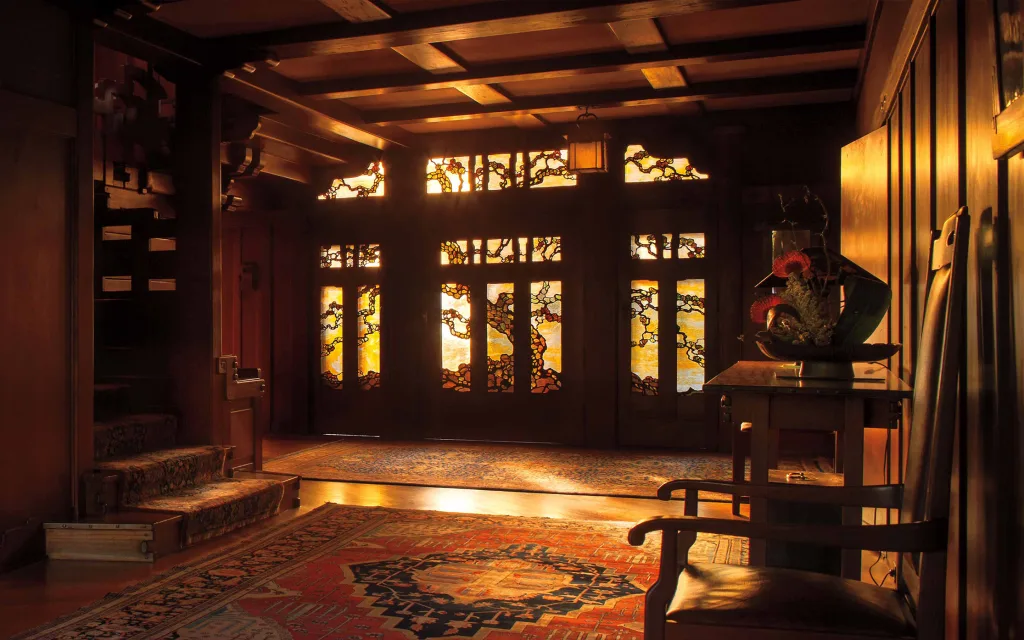
Greene and Greene designed distinctive items of furnishings for each room in the home. The curators questioned if they need to concentrate on taking one full suite of furnishings or to take examples from every of them. They opted for the latter with the intention to signify the number of designs the architects created for the home, in addition to private objects the Gambles collected, together with bronzes they bought on a 1908 journey to Asia.
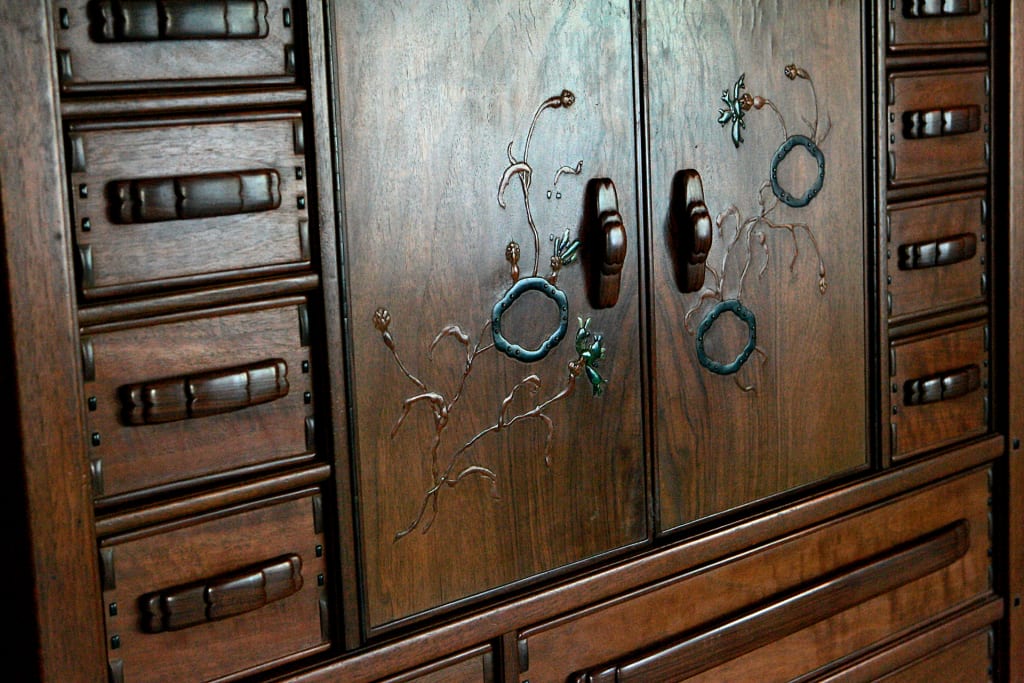
Whereas the workers managed to get what they might to security, it introduced little aid. “All you might take into consideration is the stuff you needed to go away behind and the truth that the home was nonetheless there at risk,” Trotoux says. “I used to be at all times wanting on the higher complete and pondering, ‘We want the entire Gamble Home. We want all of the objects. We want all of the structure. We want every thing.’”
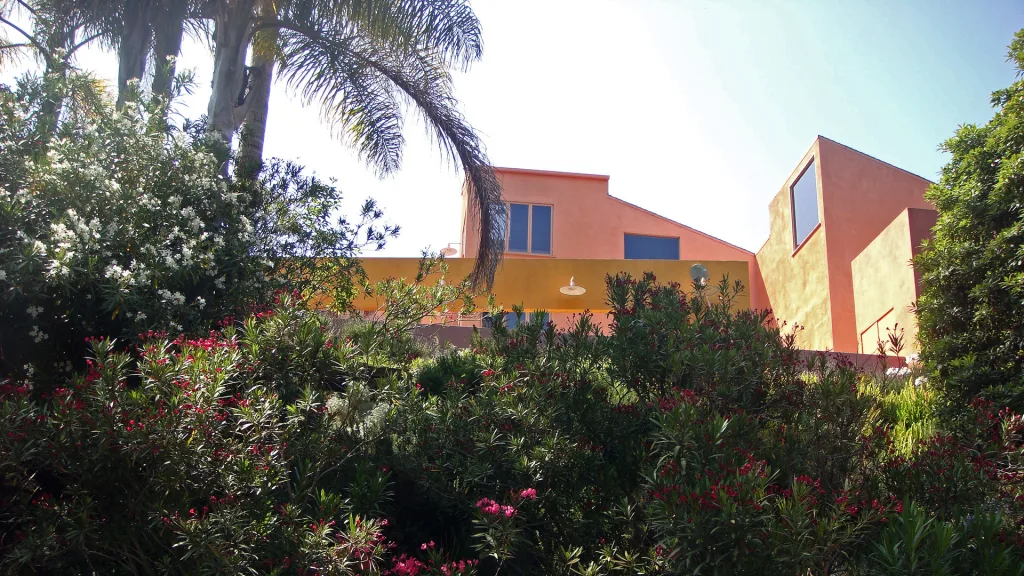
The Way forward for Dwelling with the Risk of Hearth
On the postmodernist Burns House—a home within the Palisades Charles Moore designed in 1973 for Leland Burns, an city planning professor and music aficionado—there was no plan or precedent to comply with when flames approached. Kevin Keim, the Austin-based director of the Charles Moore Basis, flew to Los Angeles on the final minute on January 8 after seeing how rapidly the Palisades fireplace was spreading. Early on the morning of January 9, he went to the home and started soaking the property with a backyard hose and eradicating as a lot plant particles as potential in order that if an ember did fall, it wouldn’t have any gasoline to ignite. “I used to be on the roof simply listening to homes and bushes exploding,” Keim says. “Smoke was simply pouring over the ridge.”
Keim felt the hearth was too shut for these efforts then spontaneously determined to make a mad sprint for no matter objects he may match into his sedan and evacuate the world. “I made a decision within the final moments, once I thought the home was actually a goner, that I’d seize what I may,” Keim says.
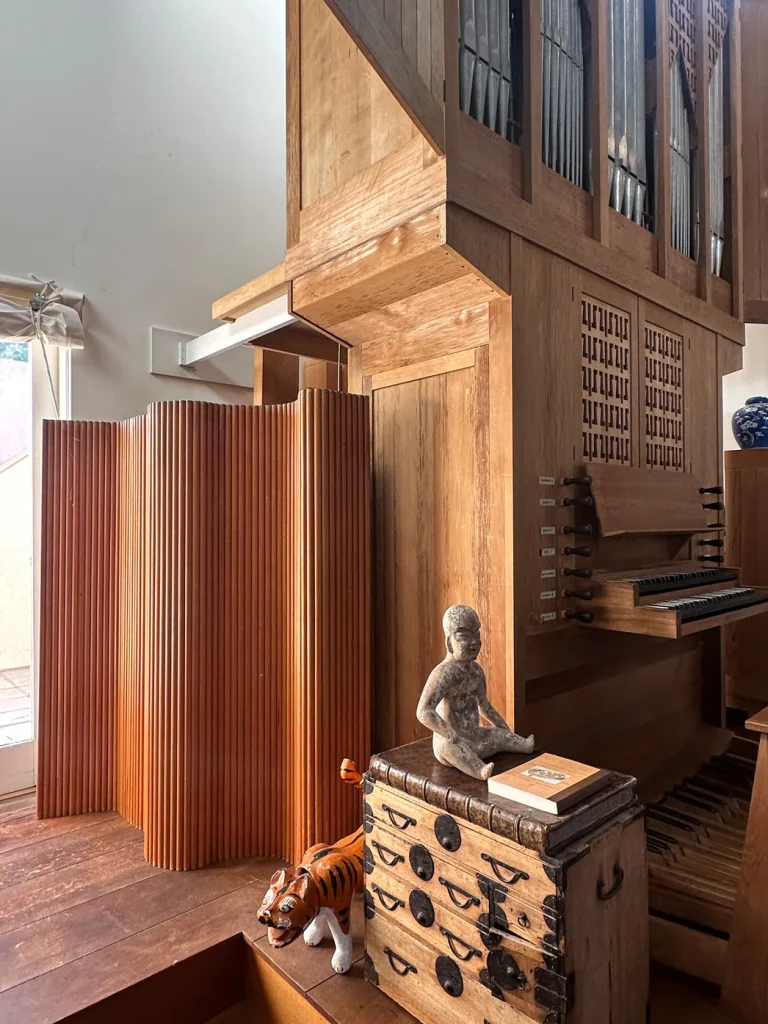
Not like the Eames Home and Gamble Home, the Burns Home doesn’t have small objects that signify the entire. Structure is the essential aspect. Moore designed the residence to resemble an Italian hillside villa, with staircases that quote English monasteries and an inside designed round a two-story-tall customized pipe organ. However the home had a uncommon Moore sculptural diorama, known as Chamber for a Reminiscence Palace. Moore solely made seven of those and the places of simply 4 of them are recognized, together with the piece within the Burns home, which was stored on a plinth within the music room. Keim didn’t have packing or conservation supplies available, so he buckled the piece into the again seat of his Toyota Camry. Then he took paintings, which isn’t replaceable like Burns’s in depth ebook assortment is, that he may match into his automotive, together with a panorama by the California painter David Ligare in addition to items by David Hockney, James Rosenquist, James Gill, Ellsworth Kelly, and Jim Dine.
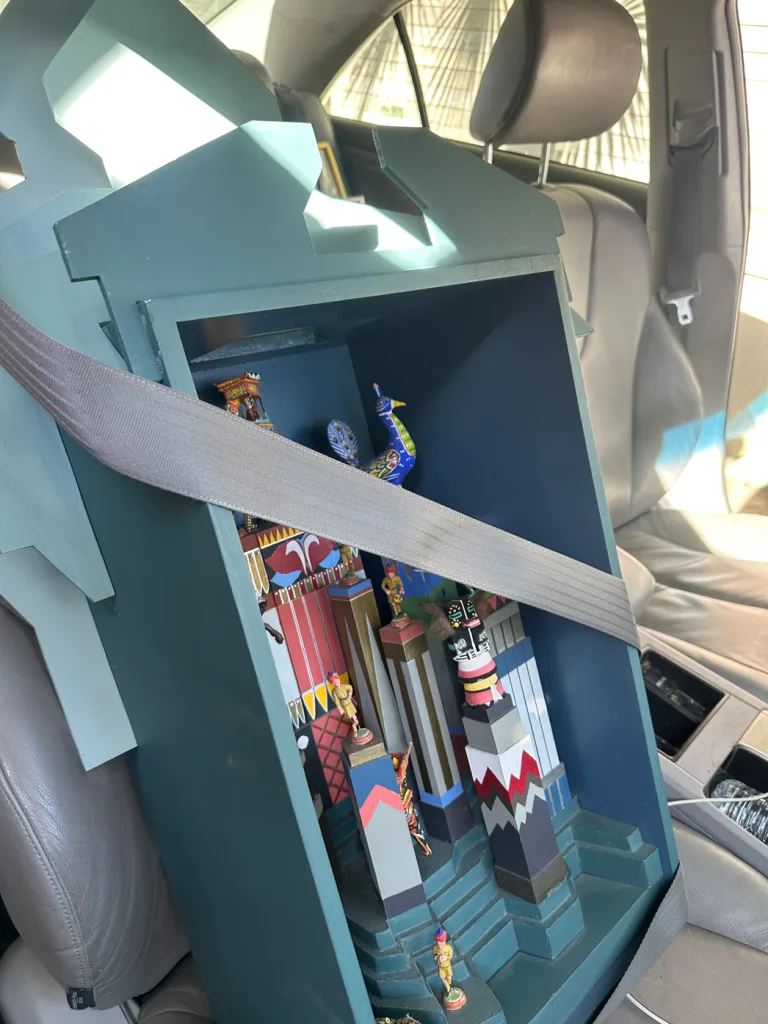
“Had I my druthers, I’d’ve taken the musical devices, however they have been too massive,” Keim says, referring to the Steinway piano, Jurgen Ahrend organ, and Klaus Ahrend harpsichord. “We have been even joking later about looters pushing the harpsichord down the road.” Additionally too massive to take? An Alvar Aalto display screen and Alice Wingwall collage.
The home continues to be standing, happily. “We simply escaped via the pores and skin of our enamel,” Keim says. Nevertheless, Keim’s expertise has shifted how he’s planning to handle the home sooner or later. This largely has to do with the panorama round it. Two of the outside passageways adjoining to the home are lined in vines, which is able to quickly be eliminated. A wisteria plant over the doorway will probably must go, too. He additionally plans to rethink the entrance staircase, which is comprised of salvaged railroad ties which might be extremely flammable since they’re handled with creosote.
Whereas there are refined fire-suppression methods in place at some museums—like rooftop sprinkler methods, constructing supplies which might be flame resistant, and drought-tolerant landscapes with vegetation-free plazas, like at the Getty Center—there’s additionally a way that there’s solely a lot that conservationists can do.
Luckily, the Burns, Eames, and Gamble homes all survived the fires. However the Palisades and Eaton fires claimed many historic homes, together with Eric Owen Moss’s Home 8, Richard Neutra’s Ness home, Ray Kappe’s Keeler home, Gregory Ain’s Park Deliberate Houses, and the Zane Gray Estate, a 1907 Mediterranean revival home in Altadena that was built from reinforced concrete and designed to be “fireproof.”
“Generally it doesn’t make a rattling little bit of distinction,” Keim says. “Within the Palisades, it was such a firestorm that nothing goes to stop your home from catching fireplace. Flames don’t even must get to it. The warmth is so intense, the homes spontaneously ignite. It’s like Richard Feynman at all times stated: you’ll be able to’t idiot mom nature.” And if this worst-case state of affairs ought to occur, hopefully a number of objects can have been eliminated for safekeeping.


